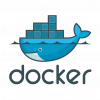Build Engineering
Articles
 |
Why You Need to Be Doing Continuous Integration It’s usually easy and inexpensive to set up a continuous integration environment for either an agile or a waterfall project. Perhaps the most obvious benefit of CI is the elimination of the integration phase that existed in traditional waterfall projects, where we typically slip the worst on deadlines. But there are many other benefits to continuous integration that you may not have considered. |
|
 |
Has Continuous Deployment Become a New Worst Practice? Software development has been moving toward progressively smaller and faster development cycles, and continuous integration and continuous deployment are compressing delivery times even further. But is this actually good for businesses or their users? Just because you can deploy to production quickly and frequently, should you? |
|
 |
Containers: A Tester's Friend or Foe? Containers support the timely delivery of a quality software application. However, the change to a DevOps process involving containers will require testers to adapt to this new, more agile environment. What does that mean for testers and the work they do? Here's how testers can embrace these changes, containers, and DevOps. |
|
 |
Shift Left: Now for Open Source and Security Compliance Shifting left has been focused on testing proprietary code earlier. But at what point in the lifecycle are you checking your open source compliance and ensuring you do not have security vulnerabilities? If you shift this process left and perform it earlier in your software development lifecycle, just like with testing, you can see the same benefits of saving time, money, and headaches. |
|
 |
Convention over Configuration: Replace Scripting with New Build Names Bernie Zelitch writes that his company’s build system scales well because early on, they scrutinized their build naming convention, saw its implications to the build ecosystem, and made radical changes. Their new naming convention takes some getting used to, but once it was fully adopted, it improved economy, flexibility, and functionality. |
|
 |
Where Did Configuration Management Go? Amid all the excitement of DevOps, continuous delivery, and the magic of single-push-button deploys, some folks have forgotten the prerequisites. You cannot implement continuous anything without effective configuration management. This article will help you reassess where you are and ensure that you have the basic building blocks in place to ensure success. |
|
 |
Seven Lessons You Learn When Growing Your Configuration Management When the number of employees, products, and releases you’re managing grows rapidly, that transformation introduces several challenges—and opportunities—in almost every aspect of configuration management. This article presents the major issues a company may face and the improvements you can make to processes and tools as a result. |
|
 |
Four Risks You Can Avoid by Making Open Source Management Part of Your ALM With open source components being used in more than 80 percent of commercial software developed today, ALM efforts must be altered to address them. Failing to do so may introduce unnecessary risks. This article outlines the potential risks associated with not managing open source as part of your ALM, and explains how these risks can be easily avoided. |
|
 |
Using Docker with Atlassian’s Bamboo for Better Continuous Integration Some projects built with Bamboo require the build system to have certain specialized software. Installing the software can become a problem when different projects require conflicting sets of software. To solve this, developers can create remote agents with different sets of software and run them all on the same machine with Docker. |
|
 |
What You Need to Know to Make Deployment Automation Work for Your Business Deployment automation is becoming more of a requirement for software development teams that are looking to remain competitive. While there are many benefits, there are also a number of areas to consider before implementing a deployment automation solution as part of your software development and release process. |
Pages
Recommended Web Seminars
| May 23 | How Generative AI Boosts Speed and Quality in Software Testing |
| On Demand | Building Confidence in Your Automation |
| On Demand | Leveraging Open Source Tools for DevSecOps |
| On Demand | Five Reasons Why Agile Isn't Working |
| On Demand | Building a Stellar Team |











